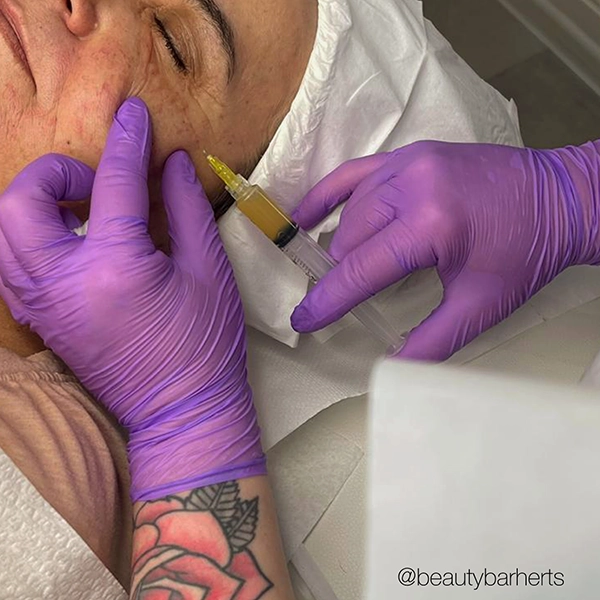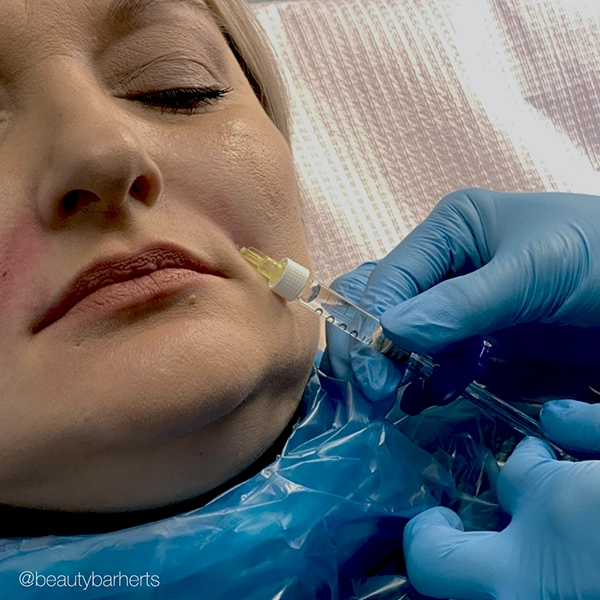Beauty Bar – Beauty & Aesthetics Clinic in Ware, Hertfordshire
Expert Treatments. Personalised Care. Natural Results.
Welcome to Beauty Bar, your trusted beauty and aesthetics clinic in Ware, Hertfordshire. We specialise in natural looking enhancements that rejuvenate your skin and boost your confidence, all in a relaxed, professional setting just minutes from Ware train station.
We believe beauty is personal. That’s why we tailor every treatment to your skin, goals, and lifestyle, empowering you with expert advice and visible, lasting results.
Whether you’re looking to smooth wrinkles, restore volume, enhance your features, or treat specific skin concerns, we’re here to help you find your natural beauty.

Why Choose Beauty Bar?
Located in Ware, Beauty Bar offers advanced beauty and aesthetic treatments in a discreet and calm environment. Clients travel to us from across Hertfordshire and beyond, including Hertford, Welwyn Garden City, Hatfield, Stevenage, St Albans, Essex, North London, and Cambridge.
Just a short walk from the River Lea and Amwell End East car park, our clinic is ideal for a peaceful beauty retreat before or after exploring the town.
- Fully Qualified
- Accredited & Insured
- Years of Experience
- Highest Levels of Care & Quality Treatments
Our Signature Treatments
Natural beauty treatments to help you look and feel your best.
Aesthetic Treatments in Ware Hertfordshire
dermal fillers
anti aging hand treatments
fat dissolving
skin boosters
under eye treatments
neck treatments
profhilo
sunekos
TKN
RF microneedling
Microneedling
Semi Permanent Makeup in Ware Hertfordshire
Wake up with smudge free and natural looking makeup.
Permanent eyebrows
Ombre permanent eyebrows
Natural powder brows
Hairstroke eyebrows
Lip blush tattoo
Permanent lips
Fine eyeliner tattoo
Latino permanent eyeliner
Smoky eyeliner tattoo
Semi-permanent eyeliner
Anti Aging Skin Treatments
Revitalise and refresh your skin with our targeted anti aging treatments. Science backed anti aging procedures.
Rejuvenate and restore your skin
Reduce fine lines
Reduce wrinkles, and age spots
The latest technology enhances collagen production and promotes elasticity, for a younger looking skin.
Lip Filler in Ware Hertfordshire
Natural lip filler
Russian lip filler
Secret lips
Butterfly lips
Lip filler corrections
Lip filler dissolving
Eyelash Extensions in Ware Hertfordshire
Fluffy russian volume lashes
Subtle and elegant classic lashes
Book Your Beauty Experience in Hertfordshire
Whether you’re new to aesthetic treatments or a returning client, we’re here to guide and care for you every step of the way. Book your appointment today and find out why Beauty Bar is one of the most trusted beauty salons in Hertfordshire.













